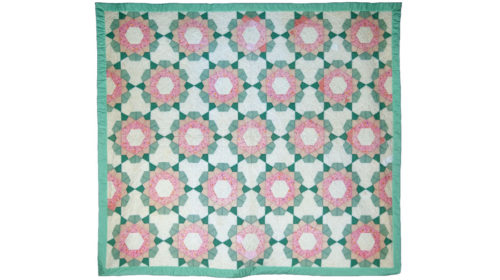In 1854 the South Sterling Methodist Episcopal Church was the first of its denomination to appear in the Greene-Dreher community. It was situated on a rise overlooking the main road to Newfoundland, with a rocky hillside at its back and a carriage shed next door where parishioners could park their buggies during services. The spacious new church rose above a semi-basement that housed a kitchen and classrooms and was lit by stained glass windows similar to those in the nave. The South Sterling Church was served by the pastor of the Sterling Church until 1930 when a parsonage was built for the new minister, Rev. Harry Roof, and his family.
Although it is not known when the Ladies Aid was formed, in March 1909 the Honesdale Citizen announced, “The Ladies Aid Society of South Sterling will give an entertainment in the evangelical church on Friday evening to aid in buying a new library for the Graded School. They will hold an oyster supper on the same day at the IOOF Hall adjoining the church, the proceeds to go to the library fund.” Oyster suppers were a favorite social event for many years. Relatively inexpensive, oysters were served in different ways—fried, stewed, escalloped, in pie, patties and soup—all involving much work. Known for their culinary talents, the Aid prepared and served the annual banquets for the Greene Dreher Alumni Association, also held at the IOOF Hall in the 1920s and 1930s.
In 1946, with more than 40 members, the Ladies Aid purchased the former meeting hall of the Patriotic Order Sons of America, built in 1904 adjacent to the South Sterling ME Church. They renamed their organization the Woman’s Society of Christian Service, and their newly-acquired building was called the WSCS Hall. It had a full kitchen and, for additional storage, a root cellar in the hillside behind the hall where foods could be kept cool during the summer months. One of their first fundraising endeavors was for the church’s organ fund, and in 1949 a musical program was held there featuring the new instrument.
Members of the WSCS gathered at the hall every Wednesday afternoon for conversation, camaraderie and, of course, quilting. They set up their quilt frames on the second floor, and many a child remembers playing hide-and-seek under those spreading canopies. Among the ladies’ favorite patterns were Sunshine and Shadow, Dresden Plate, and the challenging feather-edged Star that combines patchwork and applique techniques. They not only created their own quilts to offer for sale at events throughout the year, they also, for a modest fee, quilted the tops done by others in the community.
“My mother [Ethel Carlton Whittaker] was in the South Sterling Ladies Aid, and they’d get together and quilt at each other’s houses. She always had quilts going.” — Marion Whittaker Phillips
In addition to quilting, the hall was used for membership meetings, annual turkey dinners, pancake suppers, rummage sales and bake sales. The Young People’s Society of Christian Endeavor met there. Families and community groups could rent the first floor for children’s parties, reunions and special celebrations; however, smoking and liquor were not allowed on the premises. If a family or individual fell on hard times, such as a house or barn burned down or they were having difficulty meeting medical expenses, dinners were held that were open to the community, with proceeds to benefit the family in need.
By 1975 the costs of maintaining the building had increased to where the WSCS could no longer afford it, and the building was sold to the South Sterling United Methodist Church, as it was then known. When the church burned a few years later, ownership of the WSCS Hall was transferred to the LaAnna United Methodist Church. The women of the South Sterling and LaAnna communities quilted together under a new name, LaAnna United Methodist Women. They continued to use the WSCS Hall for several more years. In 2006 the building was acquired by the Greene-Dreher Historical Society who renamed it Peggy Bancroft Hall in honor of the its founder. It is now listed on the National Register of Historic Places.
